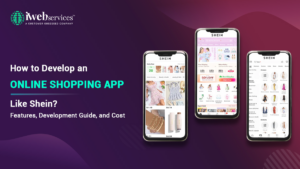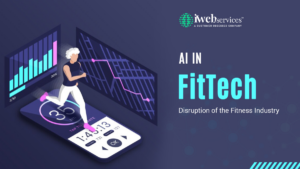The growth of mobile apps has resulted in a sea change in how organizations work in the modern world. As an increasing result of the popularity of mobile applications, people have begun to focus more on the underlying components to gain an understanding of what distinguishes a great mobile app from an average one.
The backend is one of the most important yet powerful aspects of mobile app development. The backend is responsible for powering the frontend user interface and delivering the content users see when interacting with an app.
A great backend must be able to do two things well:
1. Support the features of the frontend
2. Be scalable so that it can grow as the app grows.
In this article, we will explore what backend development for mobile apps entails. But before, let’s have some discussion on frontend app development.
What Is Front-End App Development?
The front end of a mobile application is the part that users see and interact with. It is in charge of the app’s appearance, feel, and overall user experience.
The front end is built using a combination of programming languages and frameworks. The most common programming languages used for frontend development are HTML, CSS, and JavaScript.
A number of well-known frameworks are used to create the front end of mobile apps. React Native, Angular, and Vue.js are some of the most popular.
What Is Back-End App Development?
Back-end development refers to the server-side development of an application. The backend is the behind-the-scenes infrastructure that powers the frontend user interface.
The backend comprises a server, an application, and a database. The server is responsible for handling requests from the front end and sending responses back to the client. Besides, the application is the code that runs on the server and powers the app’s functionality. The database stores the data that the app needs to function.
The backend development process involves building and maintaining these three parts. Whereas a backend developer is responsible for developing the server-side code, ensuring that the application can scale, and setting up and maintaining the database.
What Are The Important Things To Build a Great Back-End For Your Mobile App?
Building a backend for your mobile app involves a few key considerations:
Design for performance
The backend must be designed for performance. This means it should be able to handle many requests and responses quickly and efficiently.
Design for scalability
The backend must be scalable so that it can grow as the app grows. This means that it should be able to handle an increasing number of users and an increasing amount of data.
Keep it simple
The backend should be kept as simple as possible. This means that it should only include the features that are necessary and that it should be easy to use and understand.
Choose the right technology
The technology chosen for the backend must be fit for the purpose. This means it should be able to handle the workload and be compatible with the other technologies used in the app.
Security is crucial
We can’t stress enough how important it is to have a secure backend. All data should be encrypted, and user authentication should be implemented.
Test
The backend must be thoroughly tested before it is launched. This includes performance testing, security testing, and compatibility testing.
The Backend Provides Mobile Applications With a Wide Range of Functionality
The following are the basic functions that are used when developing mobile applications:
- Cloud Server
Cloud servers are often used in mobile app development because they provide a scalable and low-cost solution for hosting applications. Cloud servers can be quickly provisioned and released, making them ideal for testing and development purposes. In addition, many cloud providers offer pay-as-you-go pricing, which can further reduce costs.
- Software-as-a-Service (SaaS)
SaaS(Software-as-a-Service) is a cloud computing model that delivers software over the Internet. SaaS applications are typically subscription-based, and users can access them using a web browser or mobile app. SaaS solutions can develop and deploy mobile apps quickly and easily.
- Mobile Backend As A Service (MBaaS)
MBaaS is a cloud-based service that provides a complete backend solution for mobile apps. It includes push notifications, user management, storage, and analytics. Besides, you won’t have to worry about server administration, backups, security upgrades, scaling, or other concerns with running your backend infrastructure if you choose an MBaaS platform.
- Custom Server
The custom server is a self-hosted solution that gives you complete control over your app’s backend. This type of solution is typically used by large organizations with the resources and expertise to build and maintain their backend infrastructure.
What Tech Stacks Do You Need For Backend Mobile App Development?
Well, that can vary depending on the mobile application you’re looking to develop. But in general, you’ll need the following:
- Server:
You’ll need a server to host your app’s backend code and data. It’s essential to choose a server that is powerful enough to handle your app’s load and compatible with the other technologies you’re using.
Tools commonly used for this purpose include:
- Apache HTTP Server
- NGINX
- Apache Tomcat
- Node.JS
- Lighttpd
- Database:
The database is where your app’s data will be stored. It enables you to persist data and query it efficiently. There are many different types of databases, but the most popular ones used for mobile app development are:
- MySQL
- MongoDB
- Microsoft SQL Server
- Oracle RDBMS
- SAP Sybase AS
- FileMaker
- Microsoft Access
- Middleware:
Middleware connects a backend and frontend of an application and runs on its own server. It is divided into multiple business and presentation levels and connects the client and server. Middleware can also be used to link two or more different systems together.
- Programming Languages:
The count of backend programming languages is uncountable. But the most common ones used for developing mobile apps are:
- PHP
- Java
- Python
- Node.js
- Frameworks:
A framework is a reusable piece of code that helps you develop software applications quickly and easily. It provides a structure for your code, making development faster and easier. The most popular frameworks used for backend development are:
- Laravel
- Ruby on Rails
- Django
- Express.js
- CakePHP
- IDE or Code Editor:
You’ll need a code editor or IDE (Integrated Development Environment) to write and edit your code. Some popular IDEs used for backend development include:
- Eclipse
- NetBeans
- Visual Studio Code
- IntelliJ IDEA
- Deployment and Hosting:
You’ll need a place to deploy your code and host your app. It can be done using a variety of different services, such as:
- AWS (Amazon Web Services)
- Google Cloud Platform
- Azure
- Testing Tools:
It’s essential to test your code before you deploy it. This will help ensure your app is stable and free of bugs. Some popular testing tools used for backend development include:
- Apache JMeter
- AppLoader
- Appium
- Collaboration Service Tools:
In order to work effectively with a team, you’ll need to use some form of collaboration service. This will allow you to share code, track issues, and communicate with your team members. Some popular collaboration tools used for backend development include:
- GitHub
- Slack
- GitLab
- Jira
- Local Development Environment:
In mobile app development, it is important to have a local development environment set up on your computer. This will allow you to test your app on your own device, as well as make changes to the code and see the results immediately. Some of the popularly used LDE are:
- WampServer
- XAMPP
- Laragon
So, these are some essential tools you’ll need for backend development. However, the exact tools and technologies you’ll need will vary depending on the specific requirements of your project.
How Can iWebServices Help You In Mobile App Development?
Since 2011, The iWebServices team has been developing all types of mobile applications for clients across the globe. We have a group of highly-skilled, dedicated, and experienced mobile app developers who are up to date on the modern mobile app design and development trends. So, if you’re seeking a well-versed partner to assist you with your next mobile app development project, please don’t hesitate to contact us.
 June 21, 2022
June 21, 2022
![Unlock Everything About Mobile App Back-End Development [2023]](https://www.i-webservices.com/wp-content/uploads/2022/06/Unlock-Everything-About-Mobile-App-Back-End-Development-2022-1.jpg)






